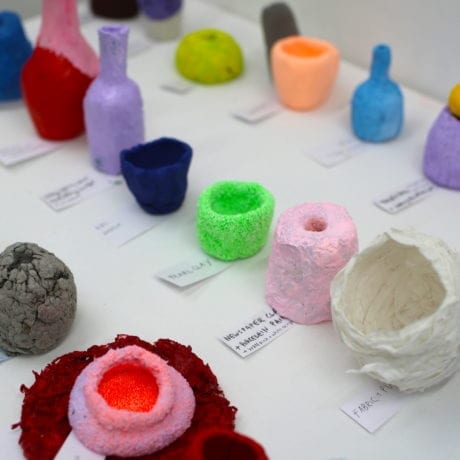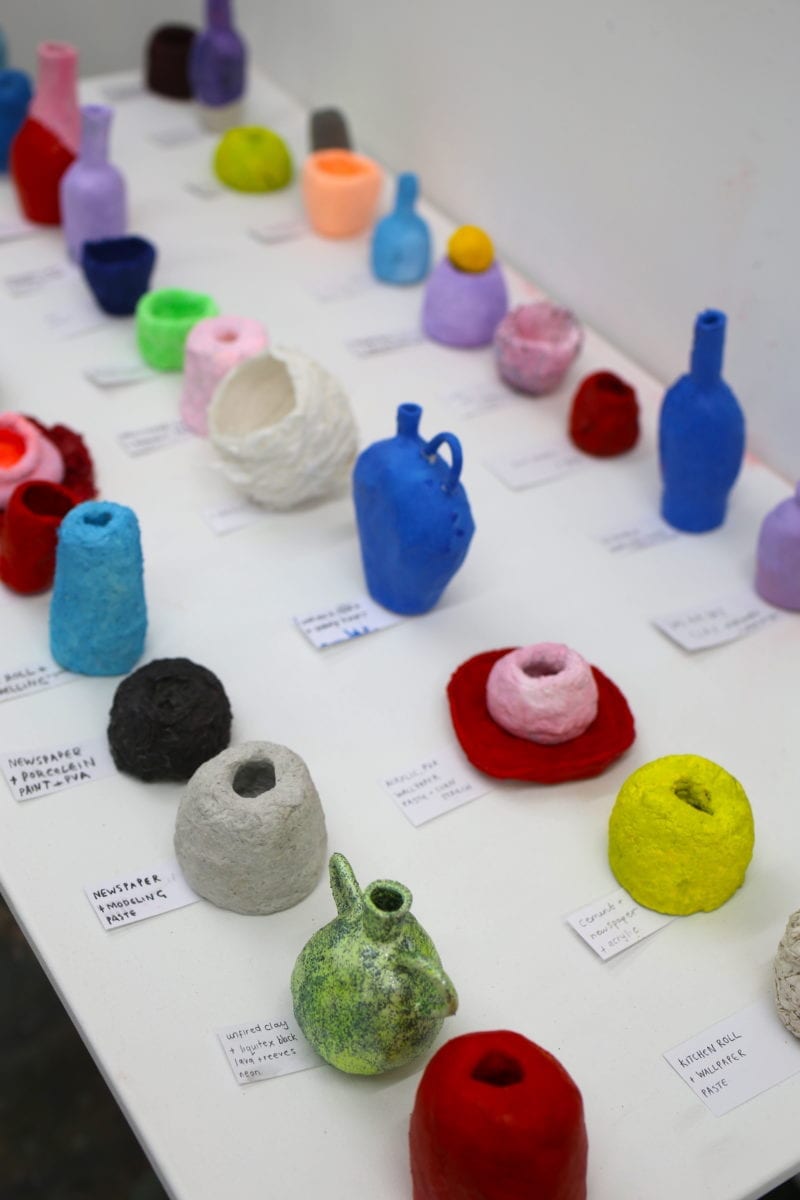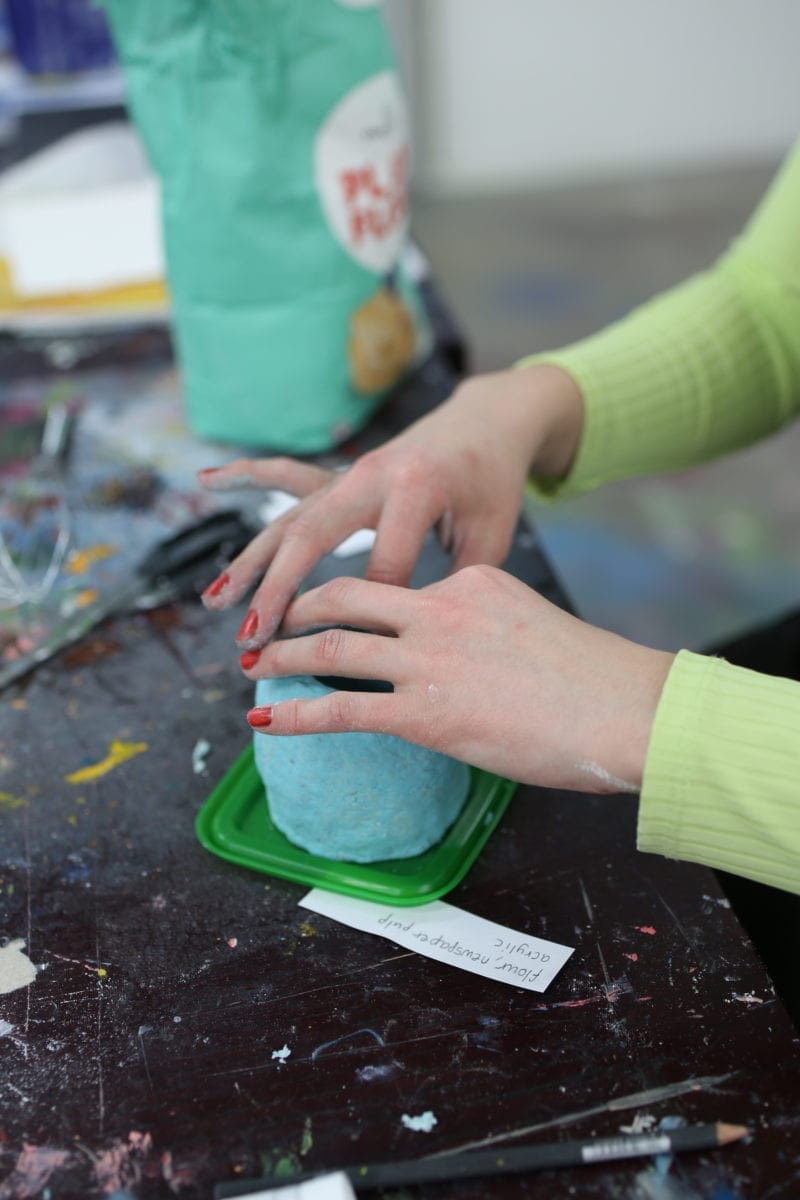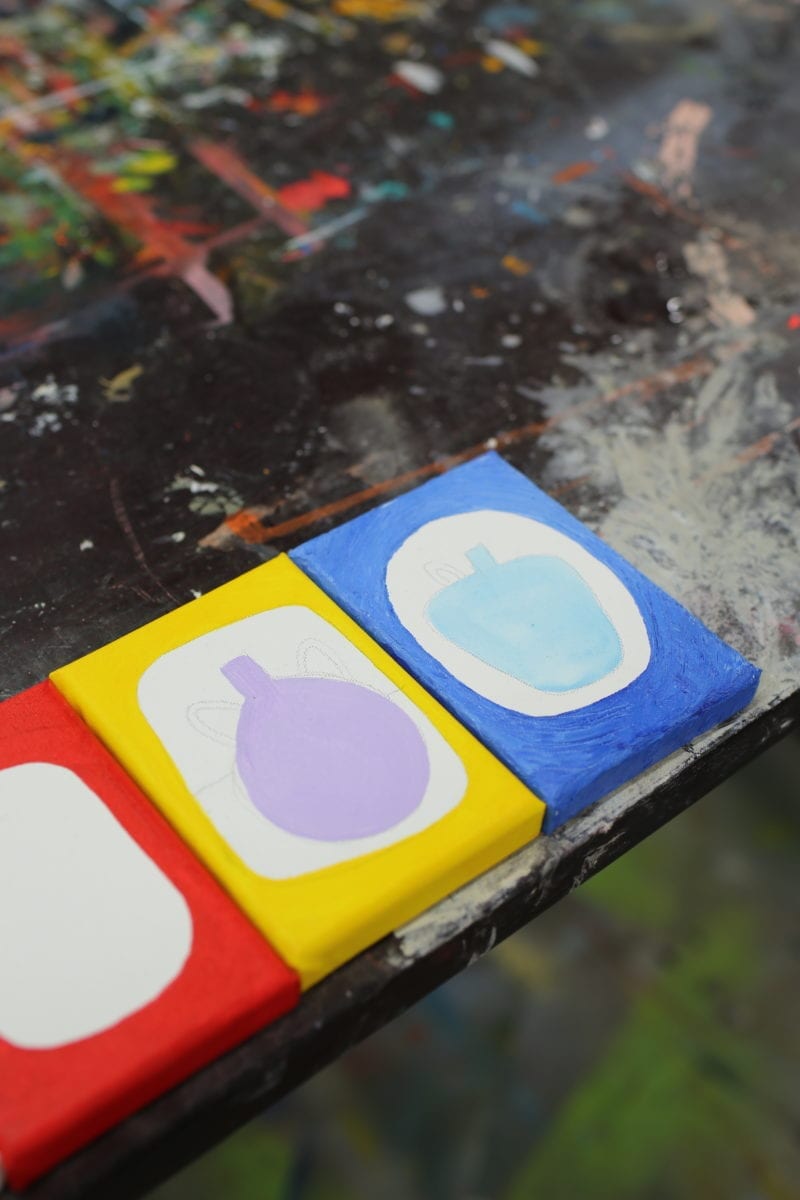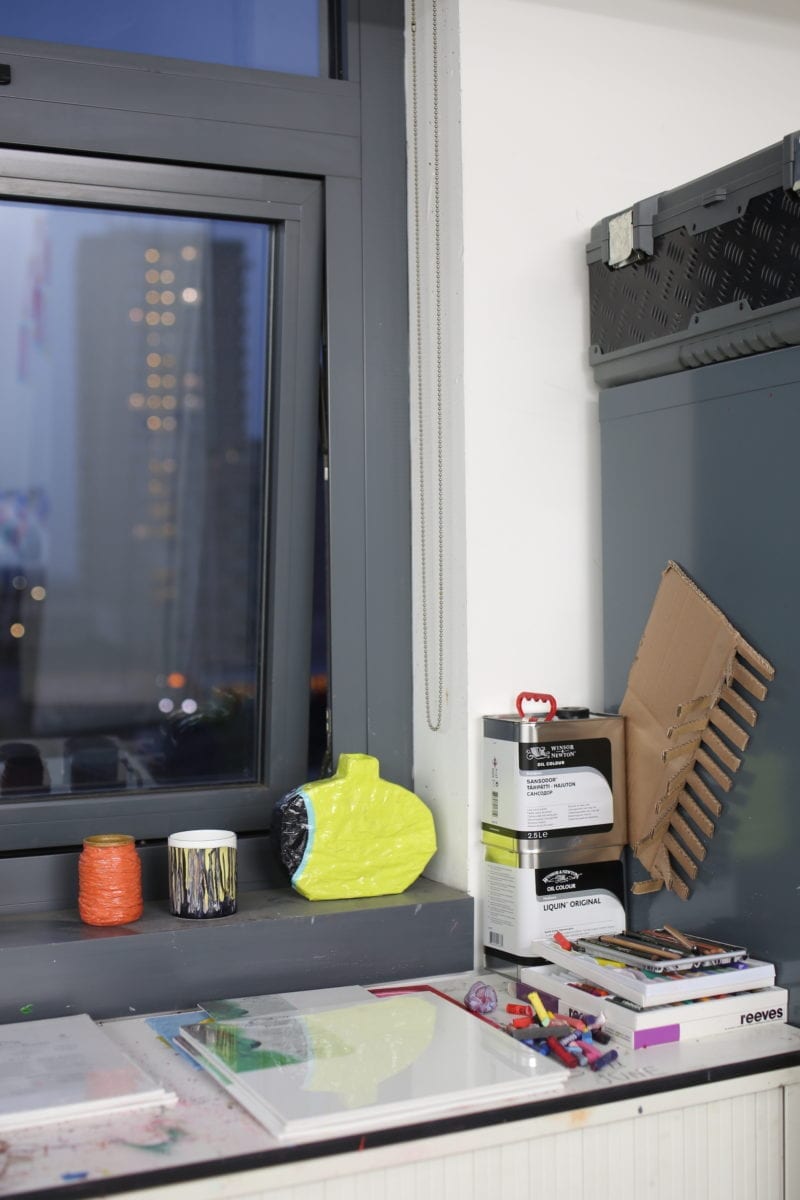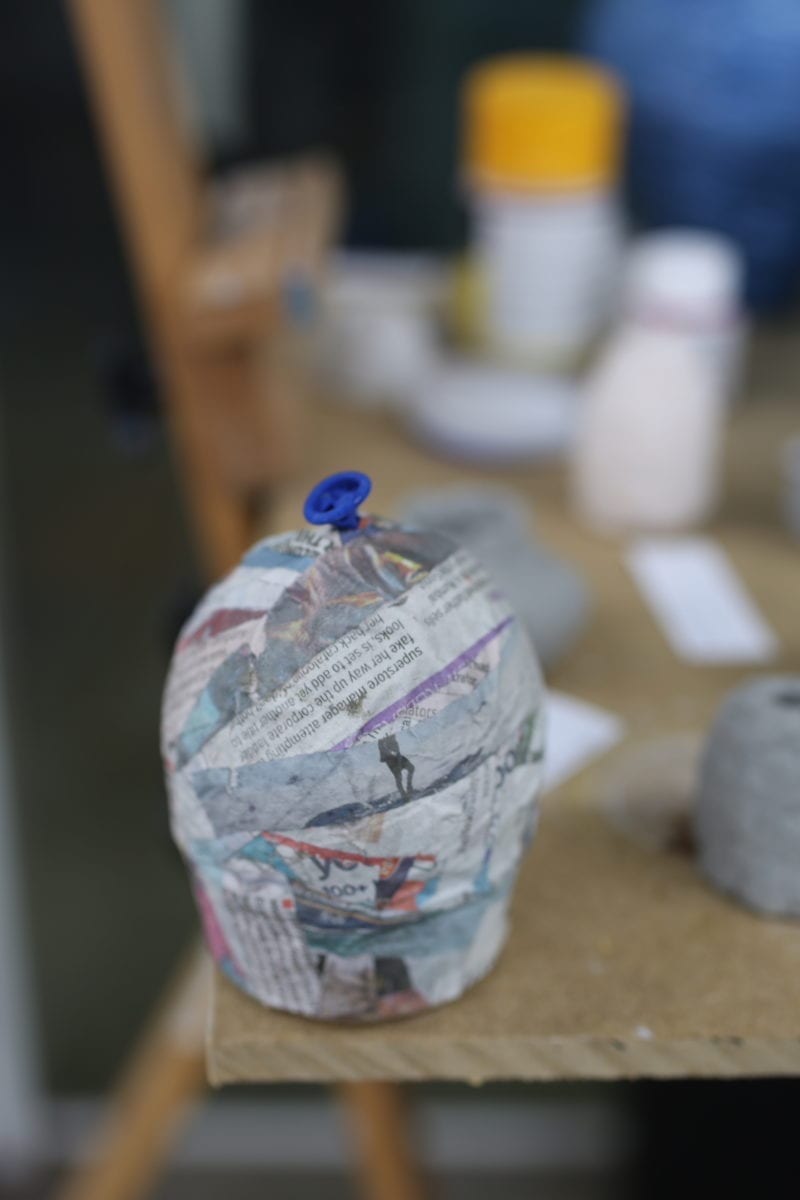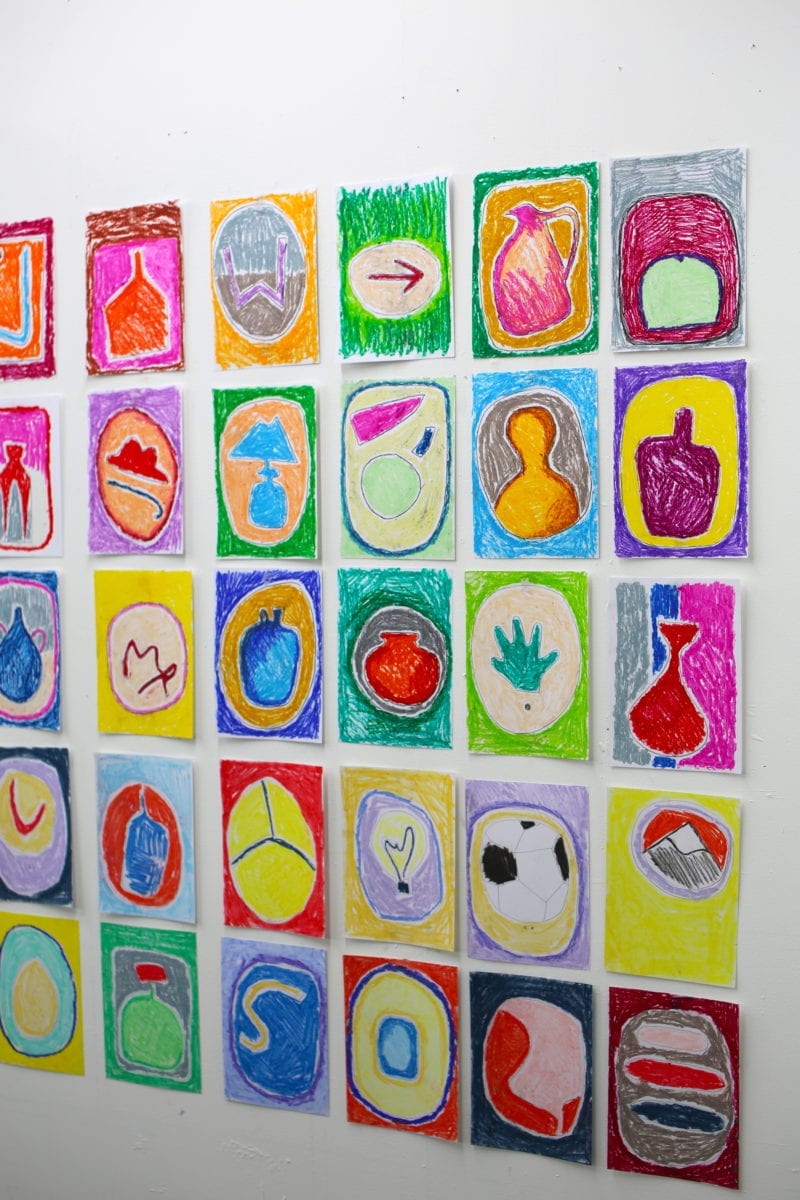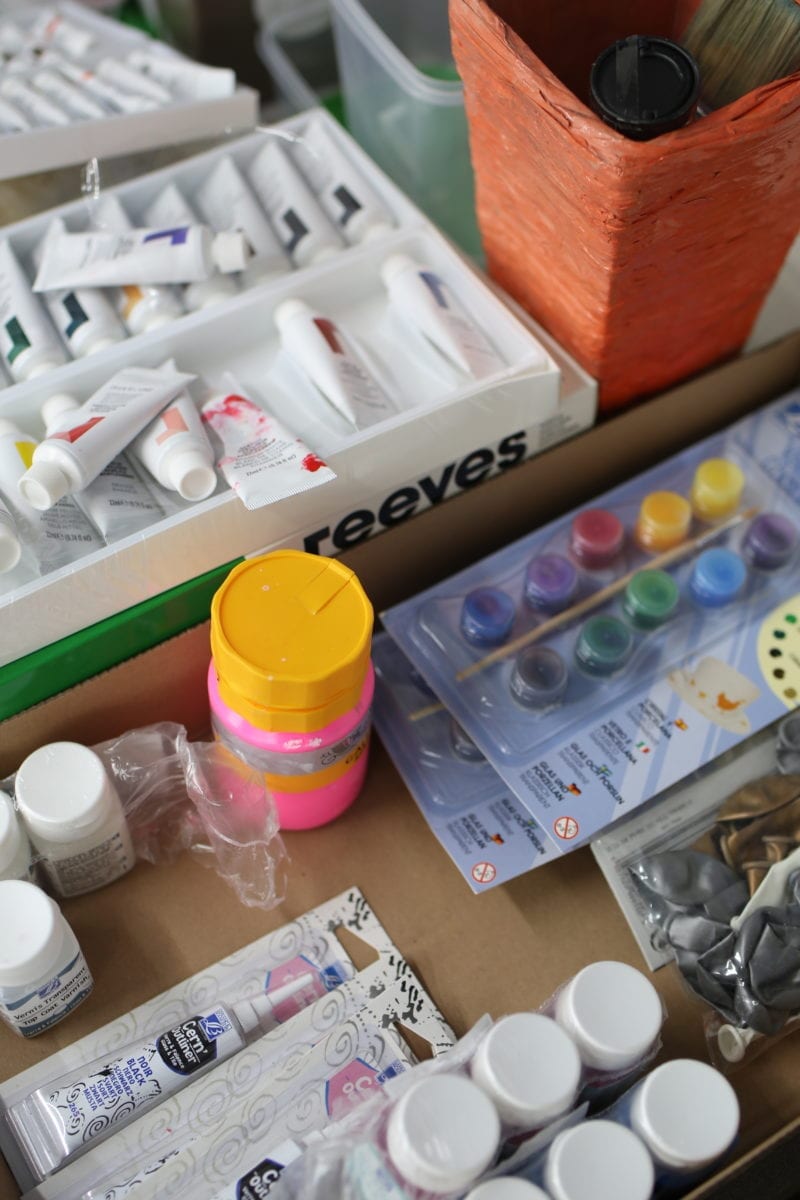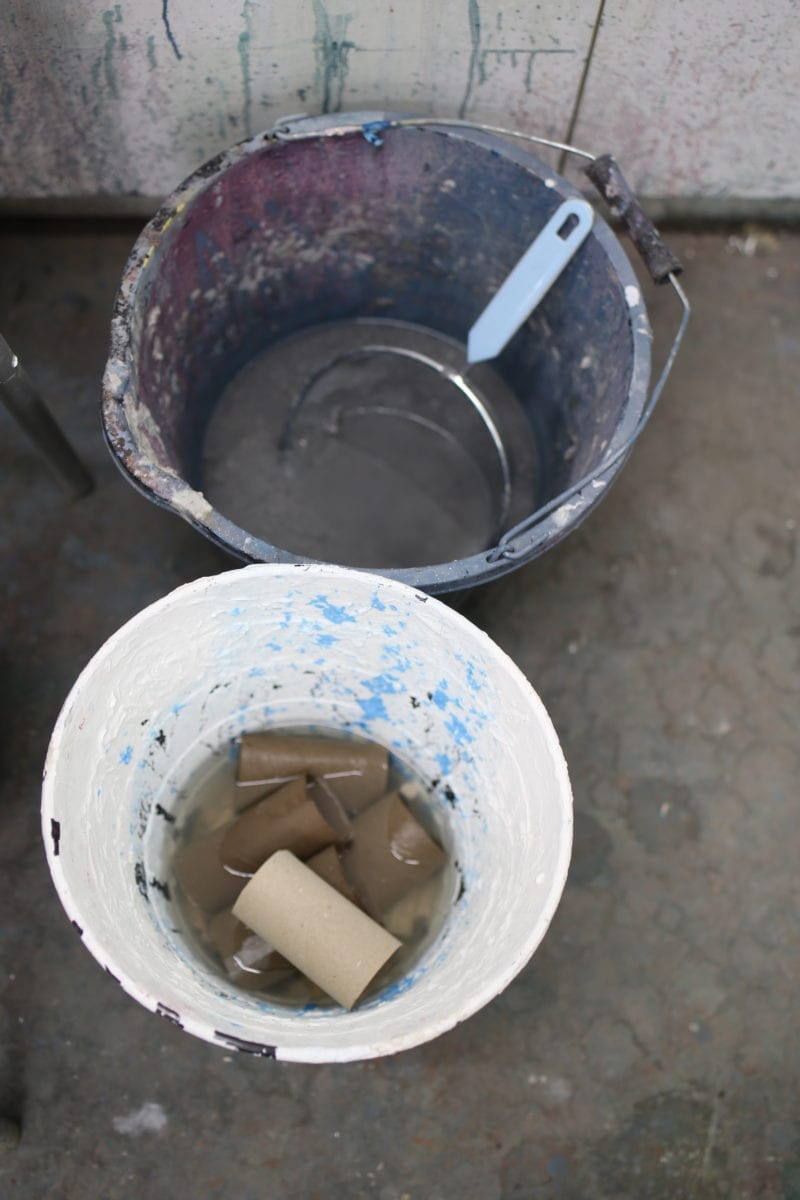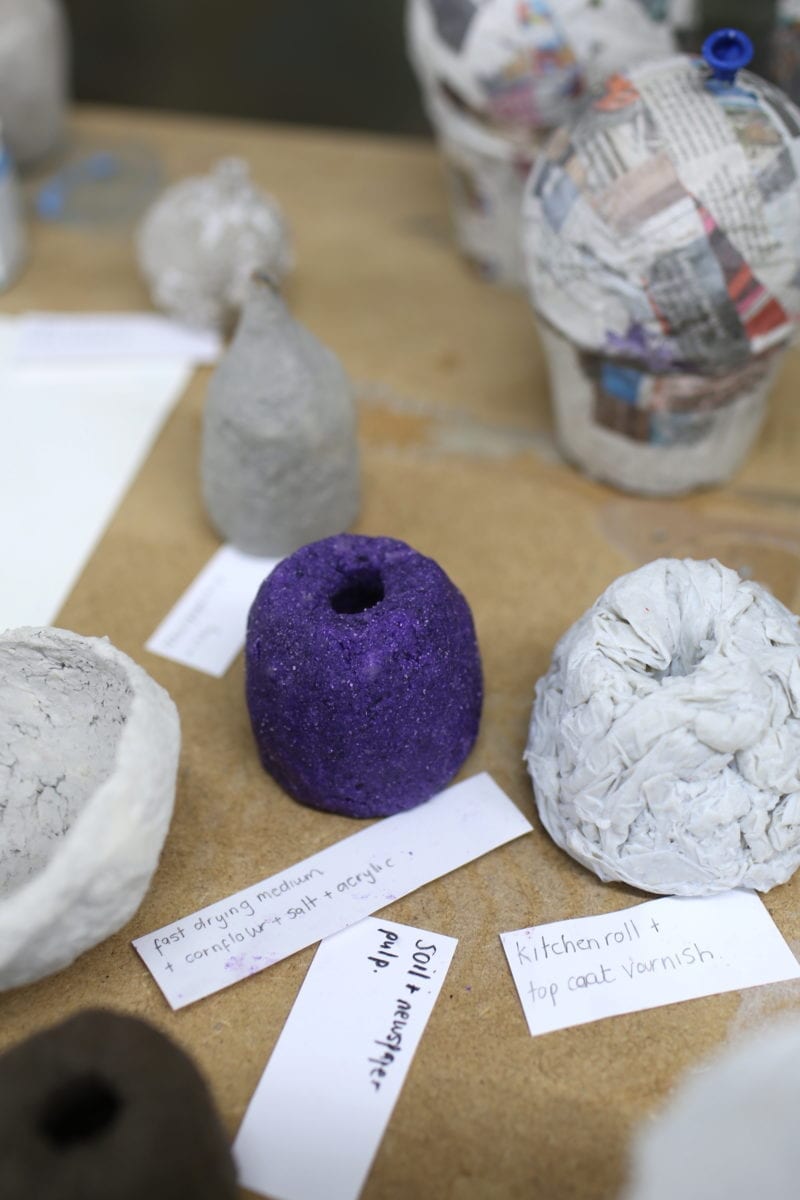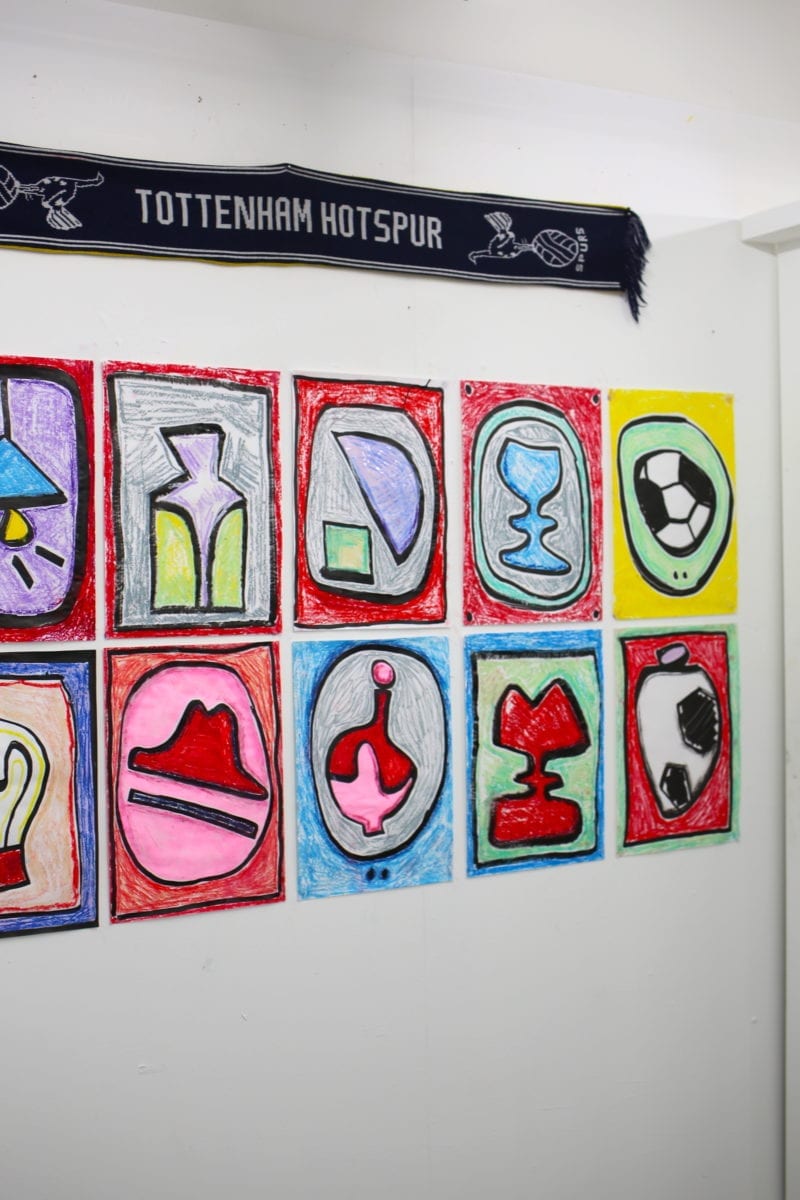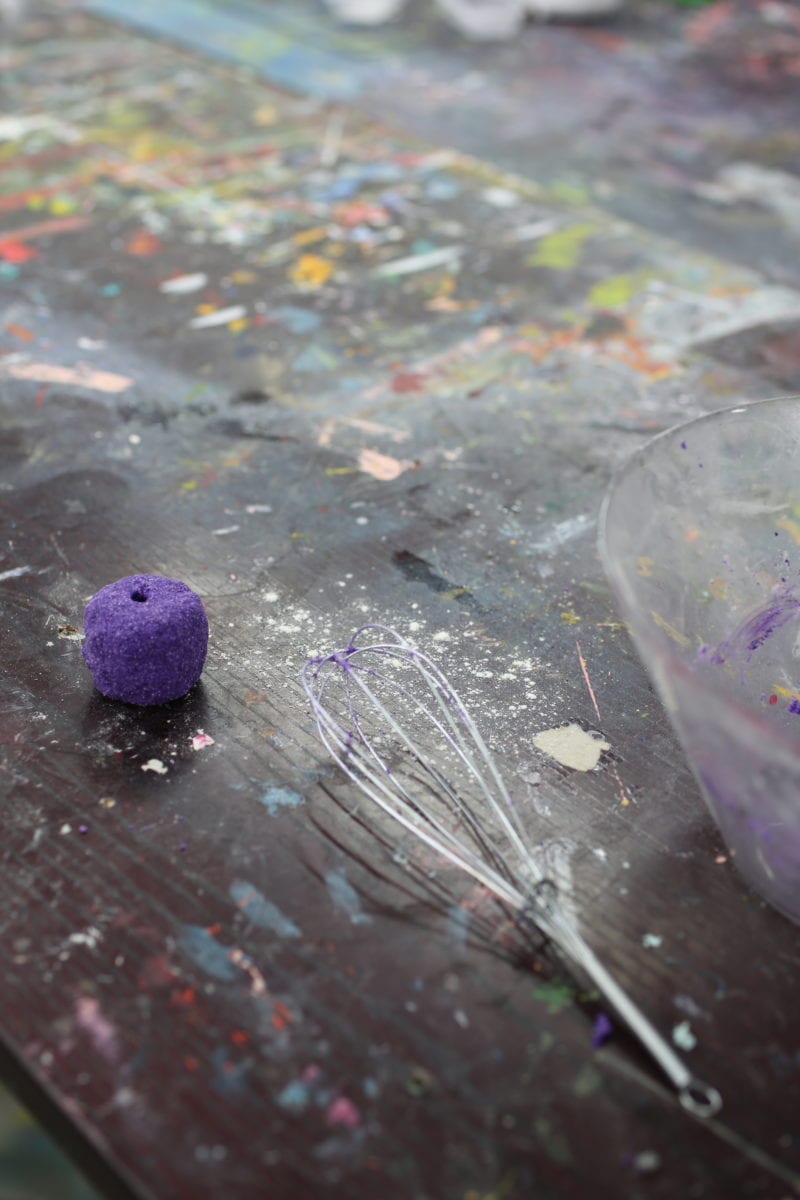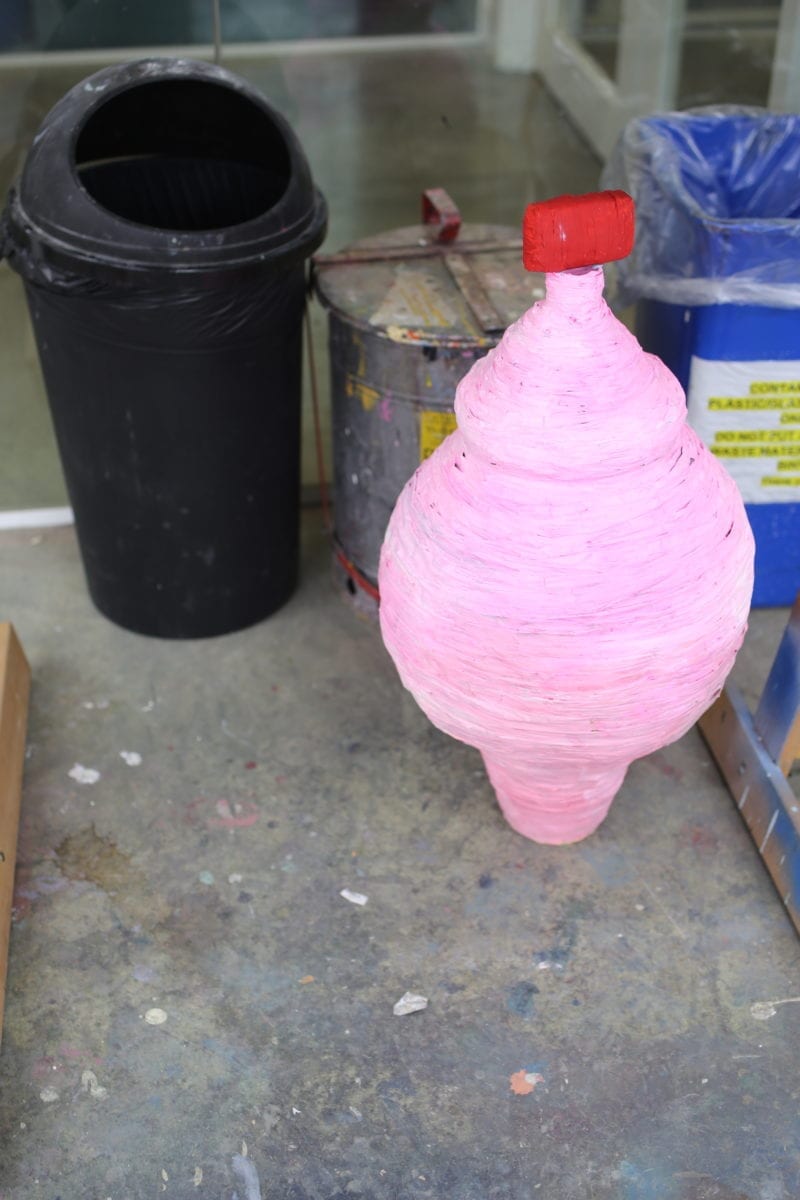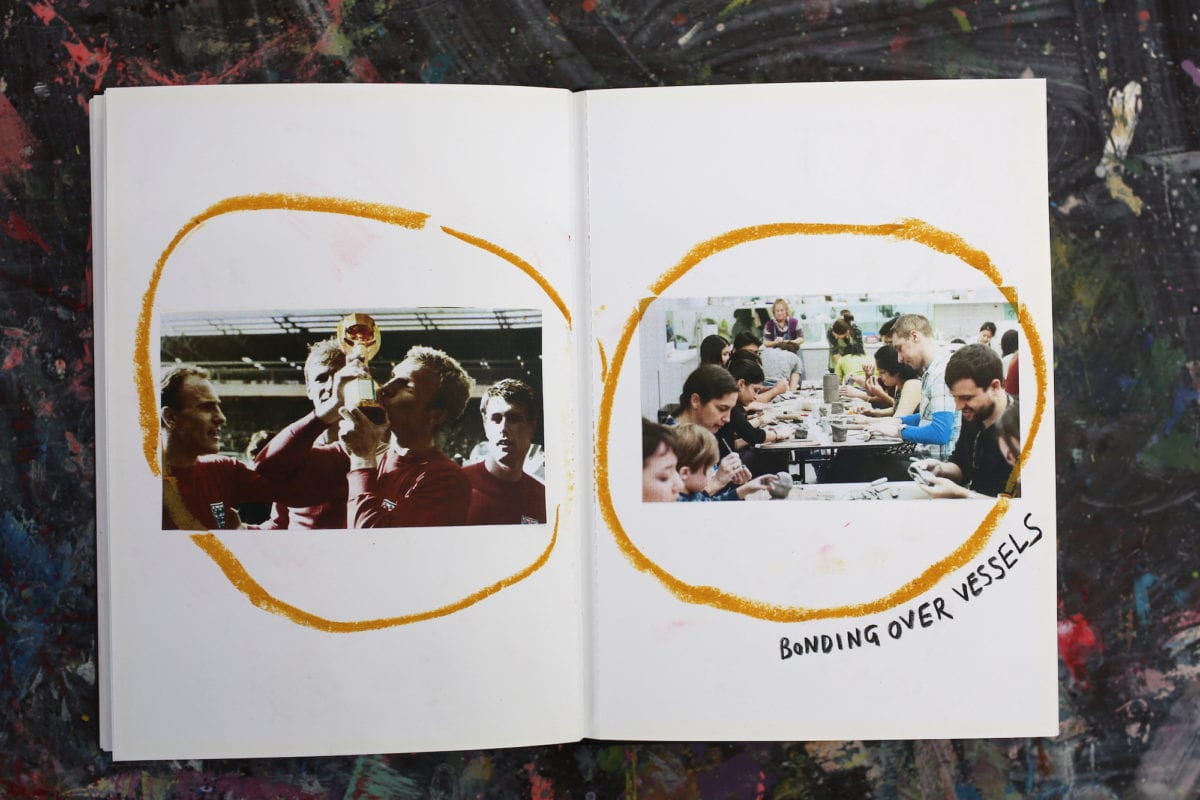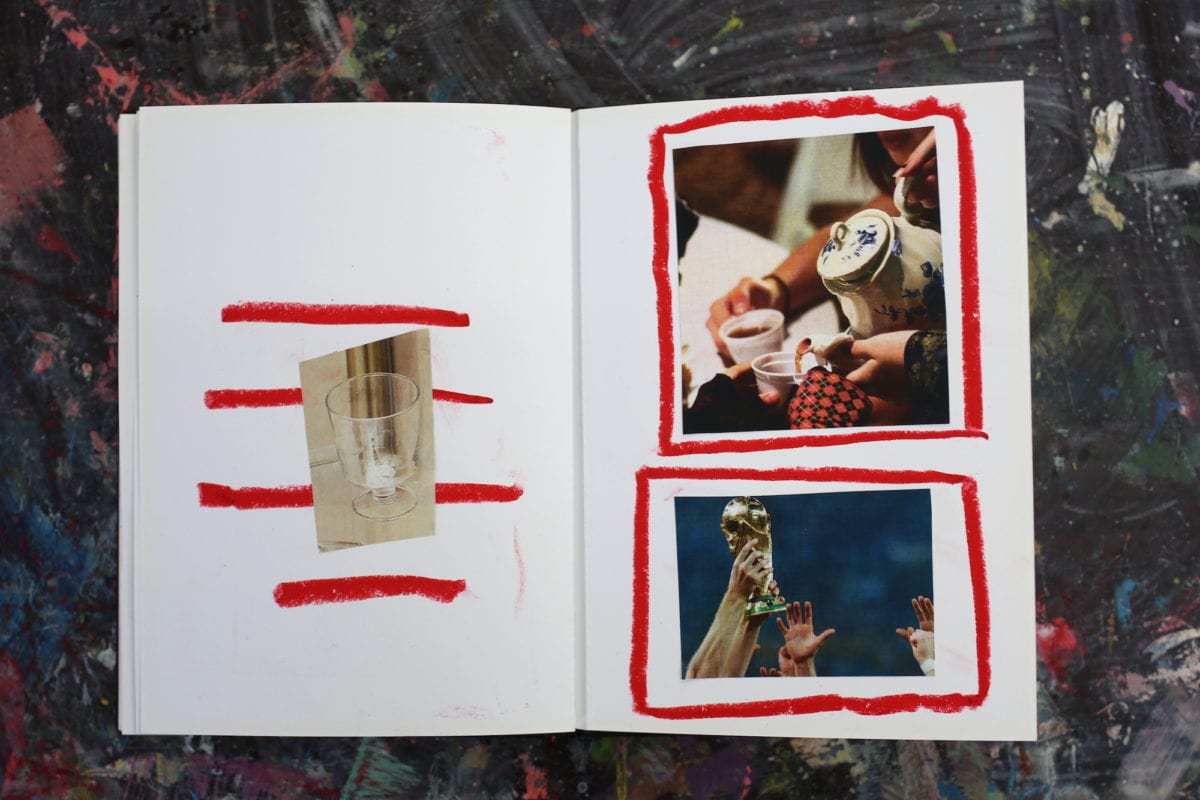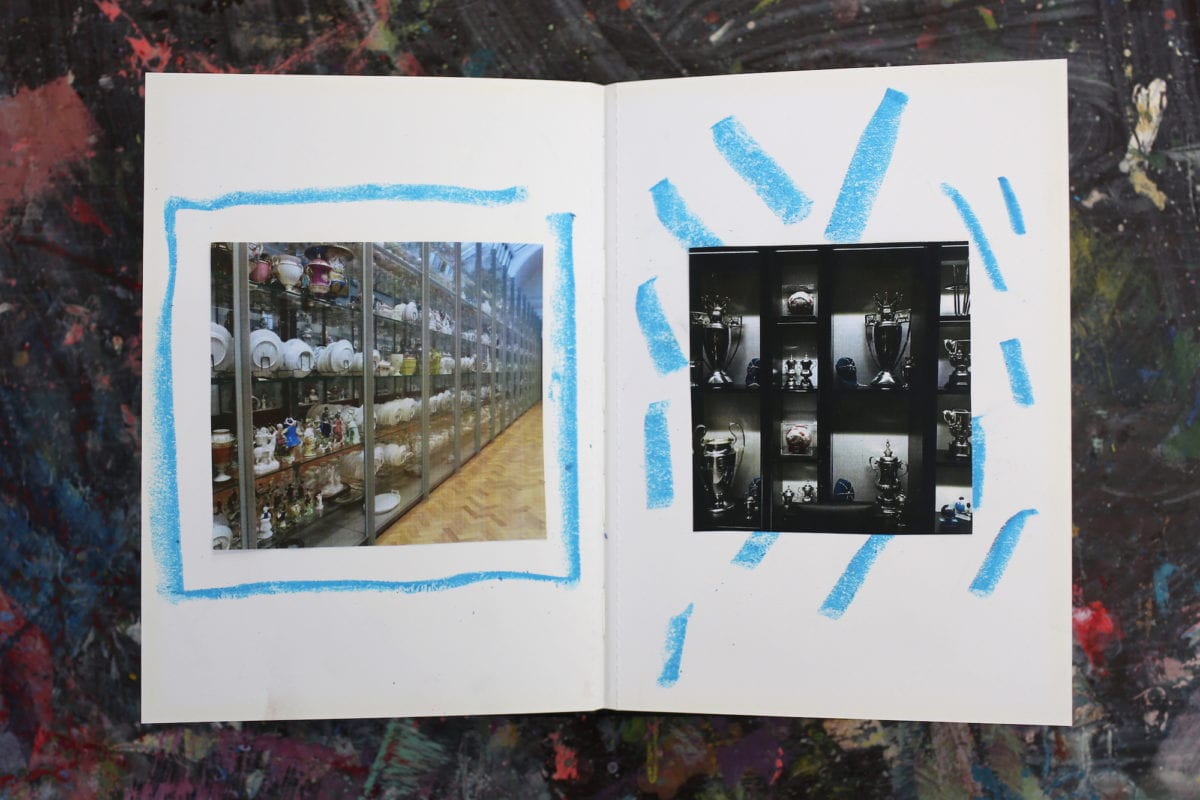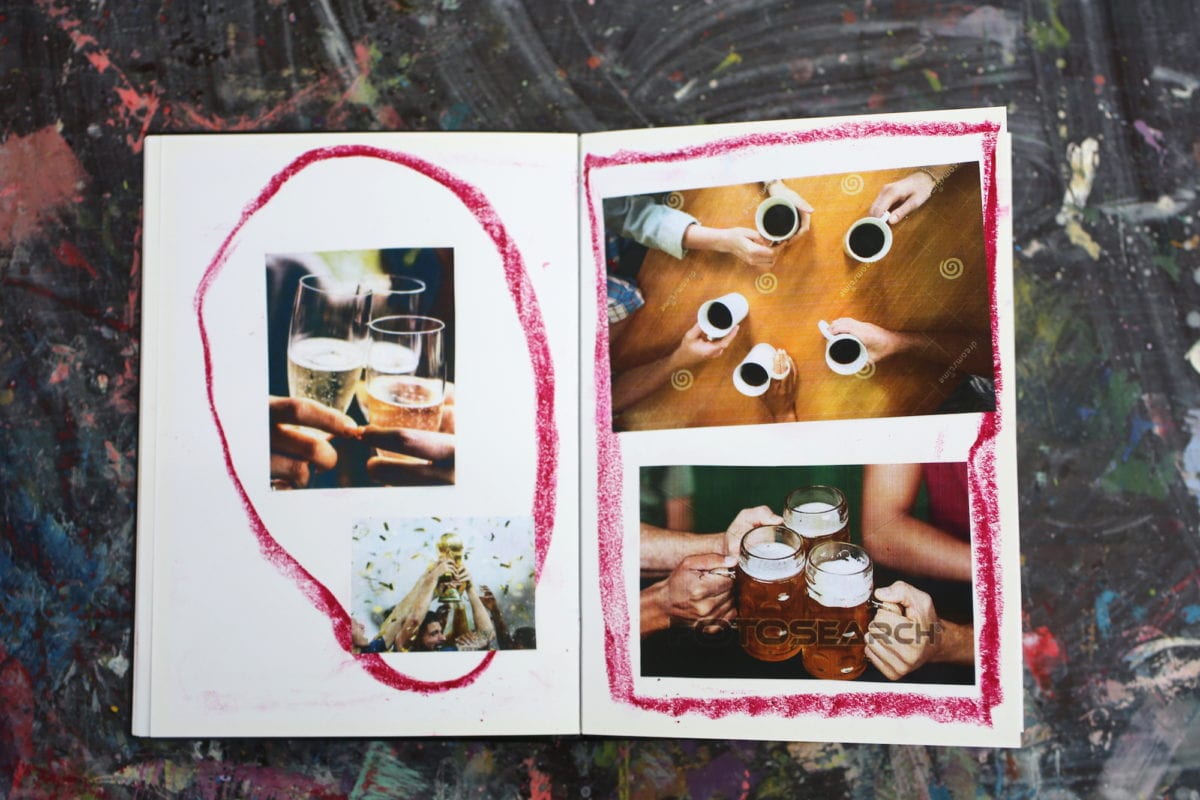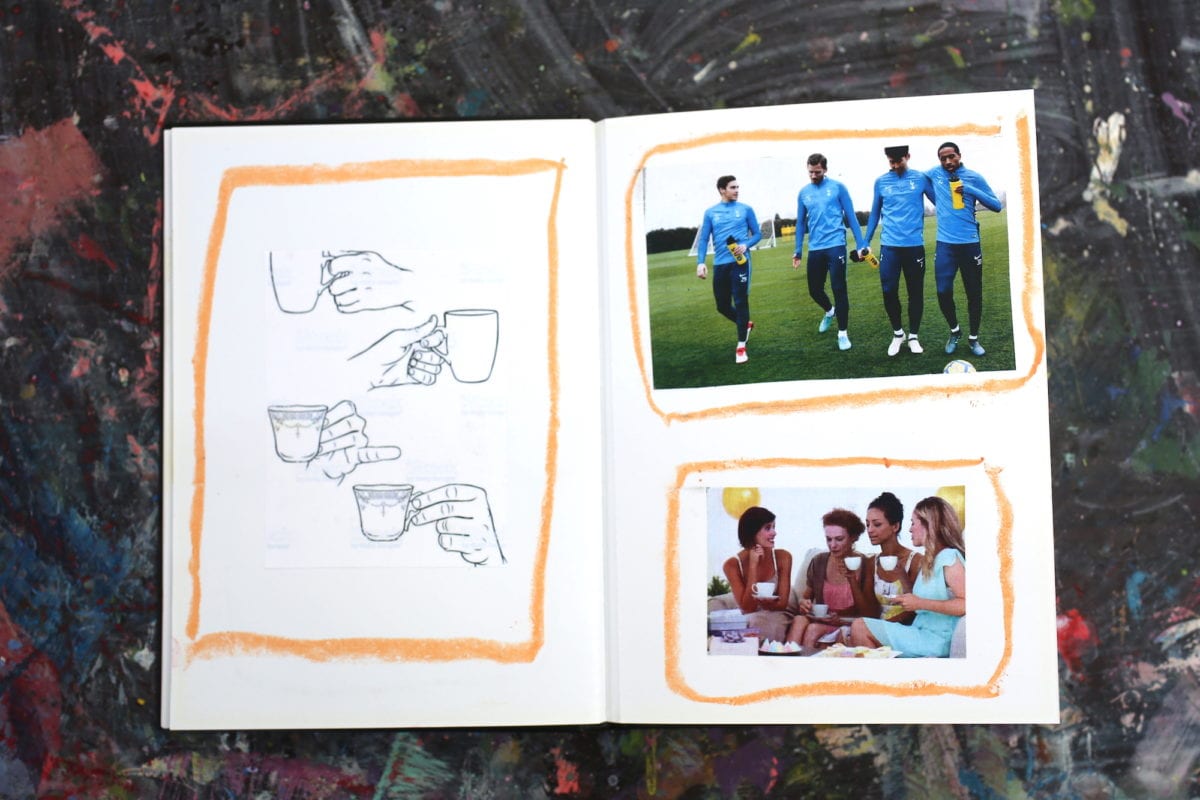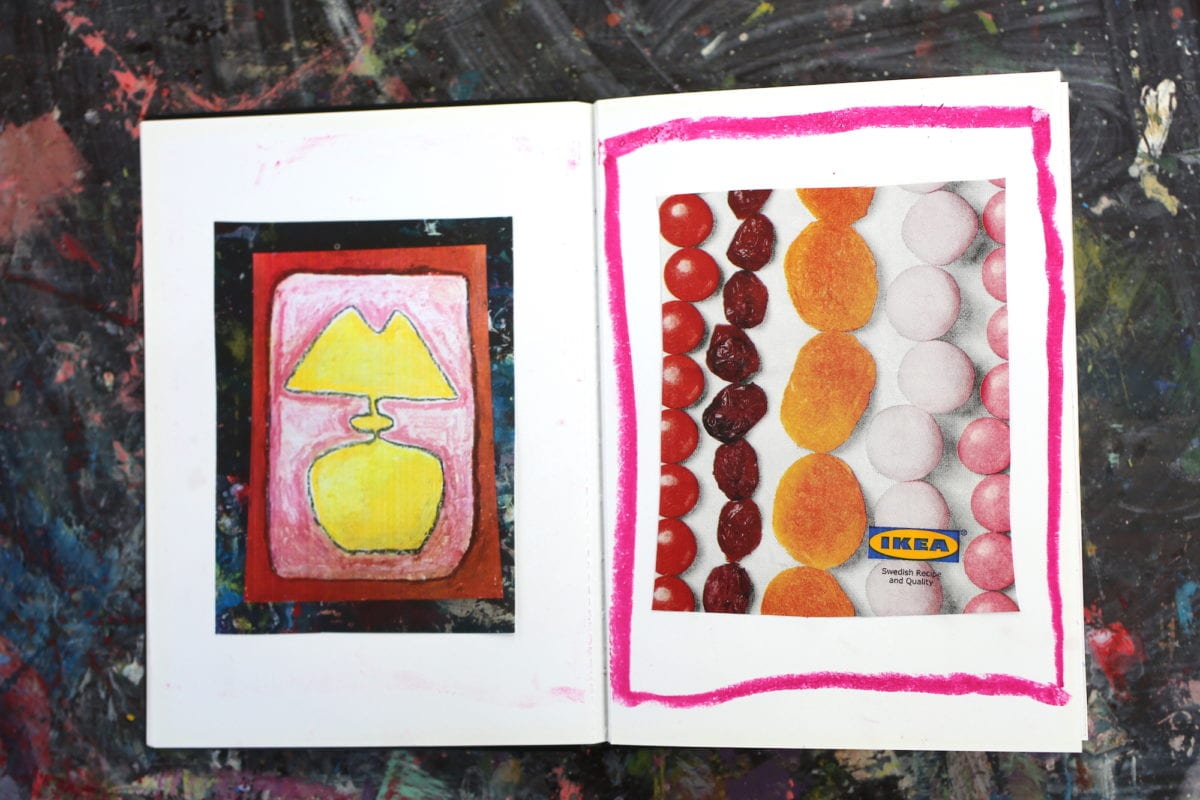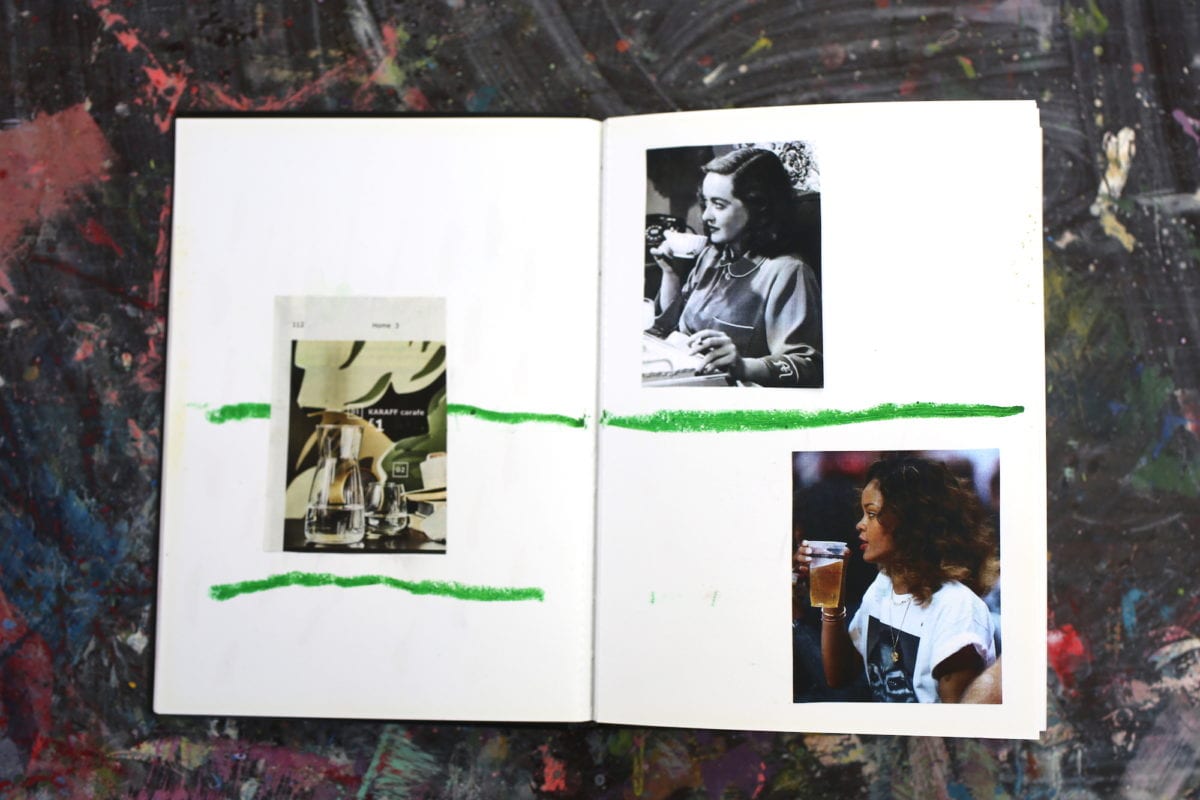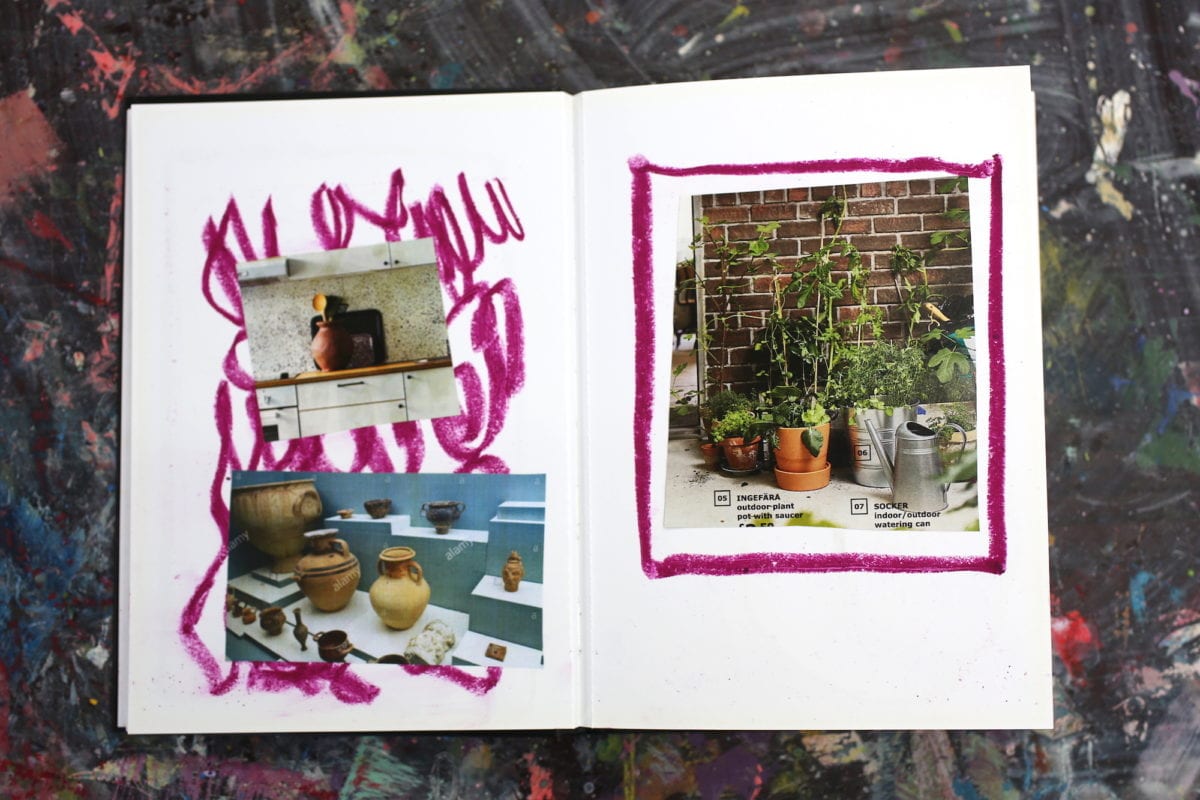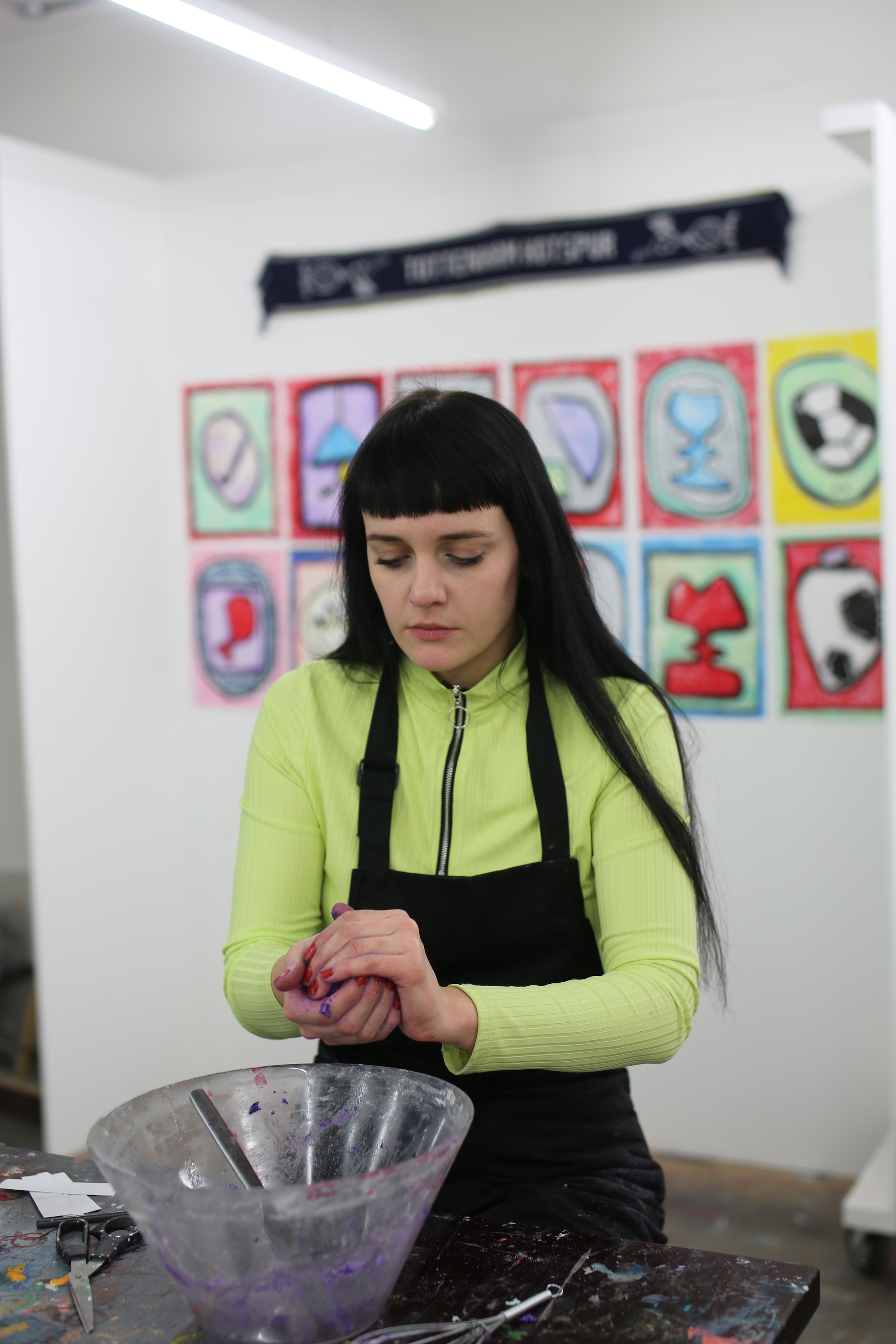
Emmely Elgersma is a ceramicist by trade, producing mugs and bowls for eager customers with kitchen cupboards to fill. She is also an artist who breaks down the conventions of pottery piece-by-piece, doing away with everything from the firing and glazing process to the clay itself. The results are wild, lumpen vessels in a rainbow array of colours, built from waste materials and just about anything else she can lay her hands on. Cornflour, cardboard pulp, newspaper scraps, salt and vegetable oil are all ingredients in her pots, and it’s easy to equate the process of making them to that of cooking. Mixing bowl and whisk in hand, Elgersma’s studio is her surreal, colourful kitchen.
She is the latest artist in residence at the Elephant Lab, where she has set up studio for a month with the aim of developing a new body of work, one that is larger and more ambitious than any she has previously completed. Open-ended and experimental, the residency programme offers artists the opportunity to focus and try out new materials and techniques; situated next to the Winsor & Newton research and development laboratory, all the paints and any other tools an artist could want are also provided. Elgersma has been busy mixing, sculpting and shaping her vessels, subverting traditional expectations of the pottery wheel to produce work that is tactile, playful and proudly DIY.
What were your aims with the project that you have been exploring while at the Elephant Lab?
I had very specific goals; I wanted to make one hundred vessels without a kiln, using alternatives to everyday clay. I wanted to experiment with using materials provided in the residency, using homemade recipes and things found online, and then mixing together different ingredients together to make forms.
What were some of the materials that you have discovered through the residency?
There’s a kind of modelling paste that you’d normally mix with paint for impasto techniques that I’ve been mixing with newspaper to make a sort of dough. I’ve used a lot of things you wouldn’t conventionally use together. I have a fast drying medium that is meant for oil paint to make it dry quicker, but I’ve been using it with vegetable oil. It’s a bit nuts; I’ve just been mixing everyday objects with arts materials to make different types of ceramic.
Tell me about the recipes that you’re writing.
I want to make a recipe book full of all these alternative methods of making vessels. Every time I’ve tried to search out recipes for hand-making clay, it’s always for kids’ stuff and it’s always so crappy and naff. Even with the packaging on some of these products, I feel like the aesthetic really hasn’t caught up with modern day ceramics. Ceramics isn’t this; it’s not just painting bloody cows on butter dishes anymore. I just wanted to make a set of recipes that show you how to make something more beautiful, to show that you can make sculpture from very little
Your works are essentially pot-shaped but have a very specific, non-traditional aesthetic. What are some of the references that have informed that look for you?
I’ve always loved the collections in the V&A for showing you how ceramics can create beautiful forms. But even there, it’s beautiful but it’s not contemporary. A lot of people find the ceramics sections extremely dull. I wanted to create a counterbalance, maintaining the beauty of the form in something that’s exciting to look at—for example by using pop colours. I wanted people to be able to look at vessels and realize, “Oh yeah, they can be contemporary.”
Are there any specific artists who inspired you in this desire to make ceramics contemporary?
Yeah, I love Ken Price and Ron Nagle. Their work speaks to me because they sort of mess with the history and the idea of how ceramics are meant to be. It’s a blob but it draws you to it.
A lot of their work embraces the lumpiness, the misshapenness, the weird mixes of colours. Is it important to you to keep the imperfections, the slightly grotesque aspects?
Usually I am a perfectionist; the ceramics that I make are cleanly shaped and I always like to keep my space tidy with everything organised and categorized. But for this residency, I am testing myself; I decided to kind of work with the materials rather than try and fix them. I’m playing around and letting myself experiment. For example, I made a vessel out of kitchen roll and wallpaper paste, which then cracked. Instead of trying to fix it, I just built it as much as the material would let me and then left it.
What have been your best recipes so far?
There was one I made by wrapping flexible modelling paste round a balloon, pasting it and then letting it dry. I think it came out pretty interesting, all yellow and spiky, and it’s ended up being one of my favourite ones. I think if someone got it as a Christmas present they’d be a bit bemused, but you could say that about a lot of contemporary art. Newspaper and porcelain paint turned out to be a good recipe, but my wallpaper paste recipe was terrible.
Papier-mâché is the thing that I really want to perfect. In March, I’m going to be trying to break the Guinness World Record for the biggest papier-mâché sculpture. I’m doing it with Limbo Limbo gallery, and I’ll have one month to make a massive thirteen-foot-long pot. I’m not completely sure that I’ll be able to do it, it’s going to be a challenge and I have to work out how much newspaper it’ll take. But I feel that the techniques I’ve learned on the residency have set me up well.
Ceramics has become quite popular among amateur artists these days, but the creations are mostly in very “good taste”. How do you feel about that?
I feel like there’s definitely been a kind of ceramic boom, which is making ceramics more common in art markets and things like that. I respect people who do it like that, but it’s not for me. I feel that there’s a lack of realization from people buying as to how much work goes into the creation of ceramics. When there are places like Tiger or IKEA where you can buy a mug for a quid, you always have to be hustling to sell pieces that you end up losing money on. It makes me so sad when you see people at art markets being told that their pieces are too expensive.
Tell me about the football theme you have running through your works.
When I was doing my initial sketches, I was thinking about all the things I love and enjoy, and football and ceramics kept coming up. I see football and ceramics as quite similar, even while contrasting with each other. They both have a history and culture which is tied up with symbols. I was very interested in symbols when looking at my original inspiration. I’ve got this rune game, you ask it a question and then you pick out a rune. It has been part of the inspiration in terms of the visual look of the ceramics. And it felt a lot like football, which is very image heavy with all the crests and logos. I just keep feeling some kind of connection, there’s a lot there.
What has changed for you since you started the residency, and what will you take away with you?
Really importantly, I think I’ve learned to push myself without freaking out. I’ve been practising being more playful in my work and nor worrying so much about my comfort level. I’ve discovered a kind of freedom in realising that it’s alright if a work doesn’t look exactly the way you want it to. I felt like my attitude before stopped me from doing a lot, but for the residency I decided I’m making a hundred vessels, so I’ve got to make a hundred! If they look ugly, I’ve just got to keep going until I make some better ones.
Photographs by Louise Benson
All artists-in-residence are invited to document their time at the Elephant Lab in a Winsor & Newton sketchbook, filling it with drawings, paint samples, odds-and-ends and other personal reflections. This is Emmely Elgersma’s.
Residencies at Elephant Lab
Practising artists are invited to make proposals for a one month residency at Elephant Lab.
APPLY NOW